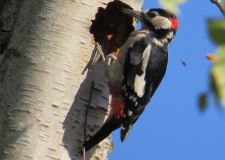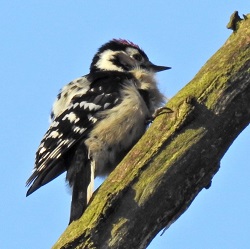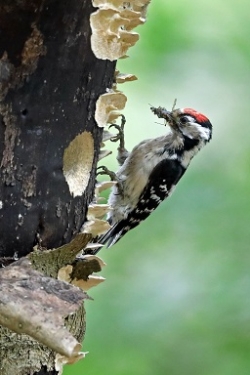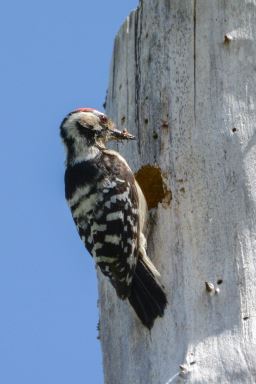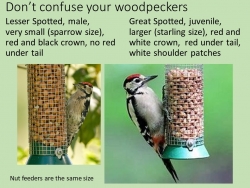We’ve had a great response to our appeal with well over 50 Lesser Spotted Woodpecker sites reported so far.
At a few sites the birds have been seen excavating a nest cavity, but the majority are areas where calling and drumming birds have been found.
We appreciate that it is a bit of a challenge but now is the time to try to pin down the nest sites. Pairs will be concentrating their activity near their potential nest site and cavity excavation will start in earnest now. Lesser Spotted Woodpeckers lay their first eggs from mid-April until early May so the cavity will need to be complete quite soon.
Tips for finding the nest
Any dead stump or dead branch greater than about 12 cm diameter can be used as a nest site.
Very old dead stumps are usually avoided because the wood is too soft and rotten. Look especially at freshly dead or broken stumps.
Look carefully with binoculars to check for any recently made holes looking particularly on the underside of any sloping stem. Woodpeckers almost invariably place their nest hole on the underside even if the branch is not at a great angle. Excavations are often just below where a side branch joins the stem.
Look on the ground beneath dead stems – there are often piles of small woodchips where the birds have made a cavity. These soon merge into the vegetation, particularly if there has been any rain, so now is the time to look.
Another trick is to listen carefully for the tapping noise made by excavating birds. This is far more regular than the sort of tapping made by foraging birds. I have found this works very well for finding Great Spotted Woodpecker nests and can work for Lesser Spots too. In the early stages of excavation the birds will usually stop excavating if there is an observer around but when they are deep inside the cavity they are usually unaware and continue even if you are at the base of the tree.
Please let me know once you have have found a nest.
